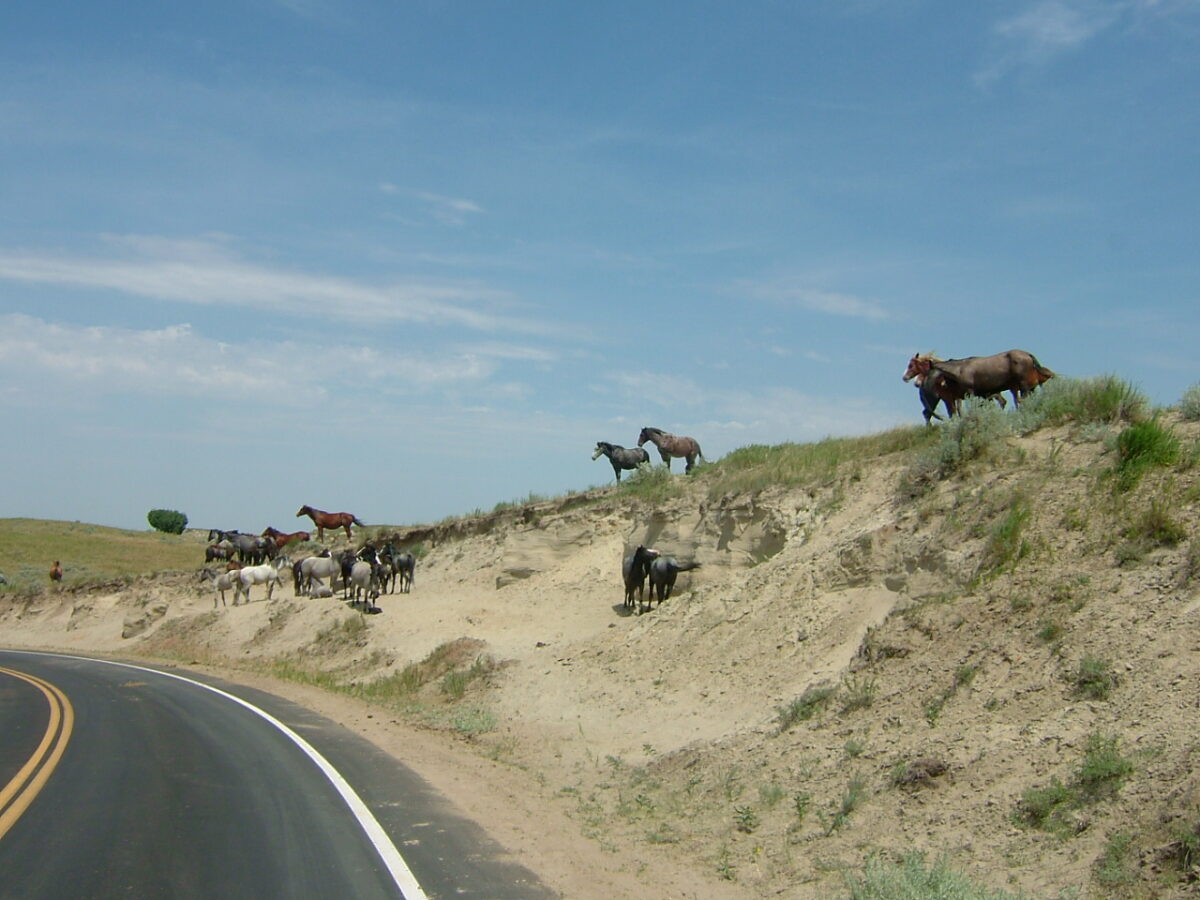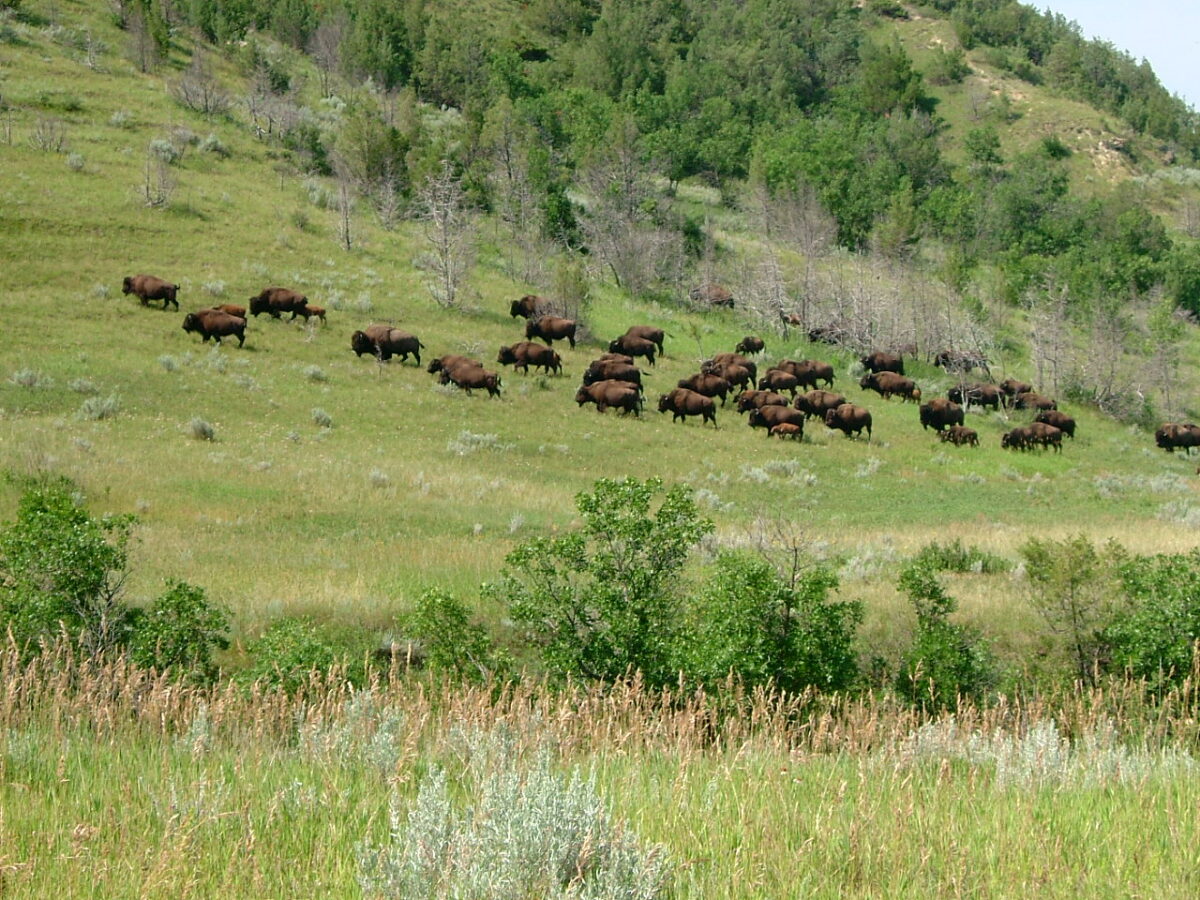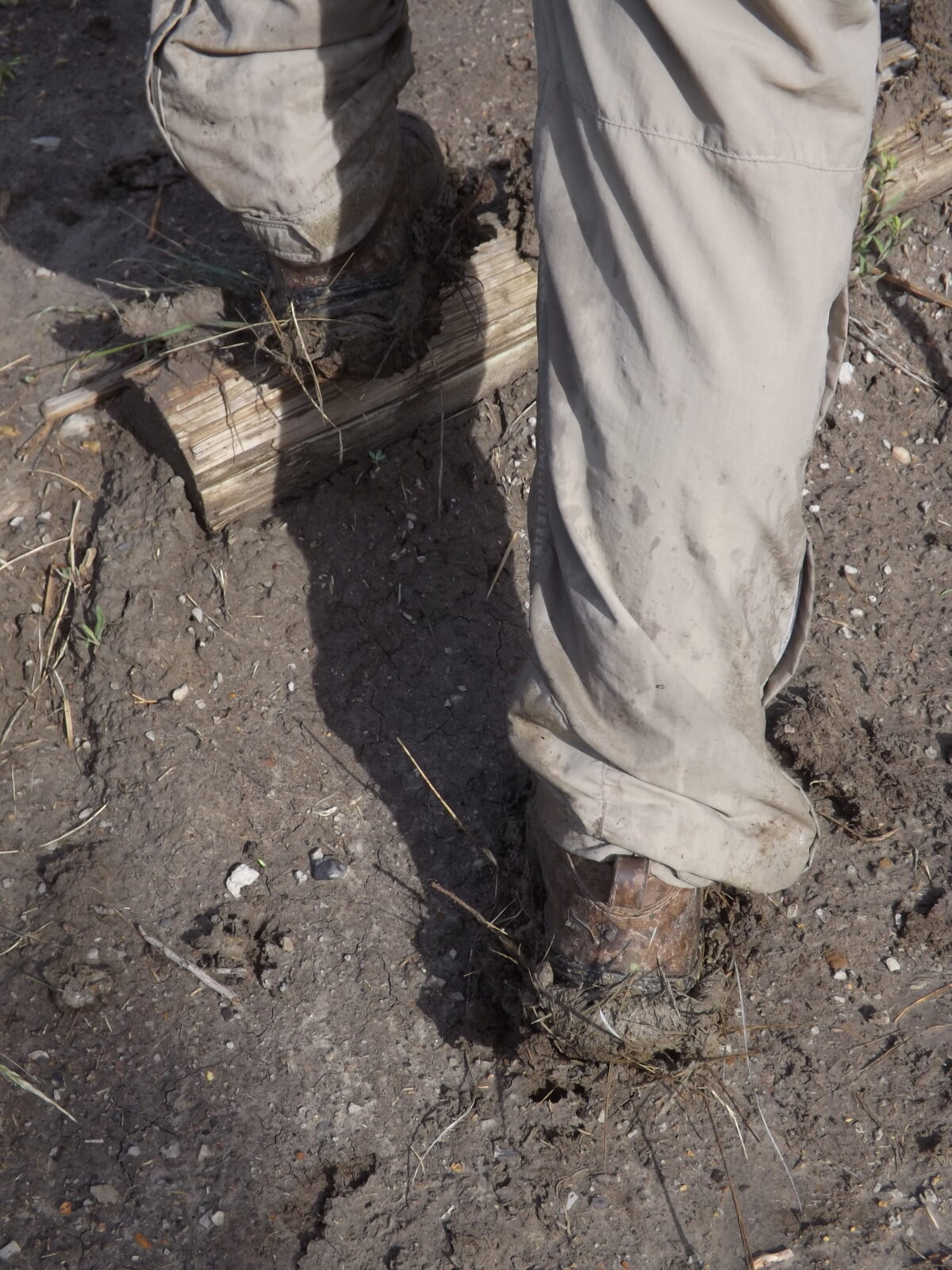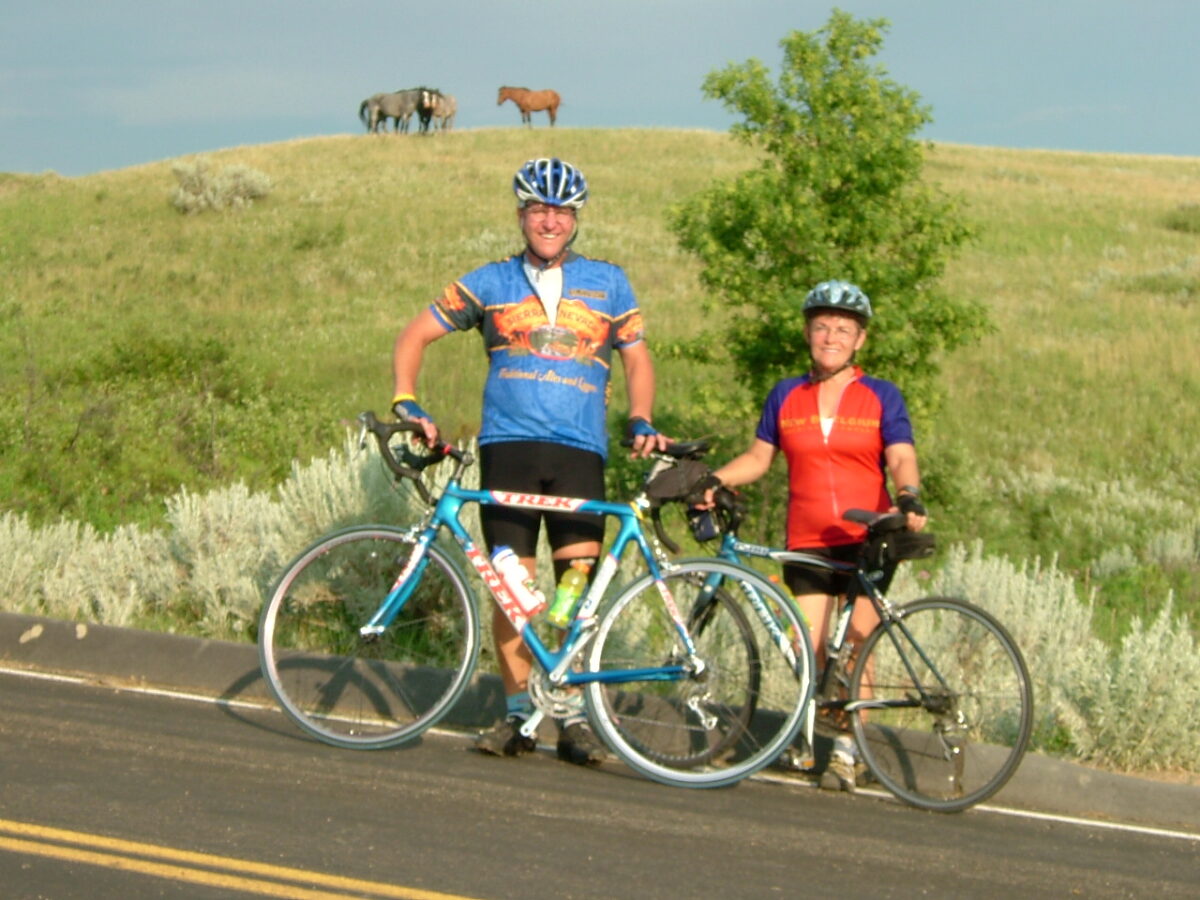Getting Horsed at Theodore Roosevelt National Park
All national parks leave a lasting impression of some kind, but some of our silliest memories come from Theodore Roosevelt National Park in the badlands of North Dakota. We got “horsed” at the South unit and “bison’d” at the North unit.
What do we mean by Horsed?
There is a lovely 36 mile scenic loop drive in the South Unit of Theodore Roosevelt National Park – with lots of overlooks and pullouts; prairie dog towns; herds of bison; and gorgeous vistas of the North Dakota badlands (totally different than the South Dakota badlands, by the way).
We decided this would be a wonderful bicycle ride. Before setting out, we asked the ranger for advice – which direction to go and whether it was hilly. She recommended that we go clockwise and her only advice was to watch out for the Bison.
What she failed to mention were the wild horses…

About half way through our ride, we came across a herd. Some on the road. Some on the hills on either side of the road. And, a stallion who clearly did NOT want us going through. Each time we tried to move forward along the road, he would run towards us.
Not wanting to turn back, we thought we’d just wait them out, but they didn’t move. They seemed quite happy just grazing along the side of the road. Finally a couple drove past in a truck and saw the predicament we were in. They helped us by letting us use their truck as a shield, driving slowly with us at their side to pass through the herd. Even that was a bit scary as the stallion moved towards us a few times while driving past. But the truck was a good defense.
Thanks to these good samaritans we were able to continue our ride and witness more spectacular scenery. Thankfully no more wild horses on the road. Lots of Bison, but off in the distance.

Getting Bison’d at the North Unit
It was in the North Unit that we had close encounters of the bison kind. There had been heavy rains before we arrived but we had good boots, so we decided to go out hiking anyways. The trails in the North unit are gorgeous, but after the rain they were really muddy. The sticky clay built up on our boots and almost every other step, we’d have to scrape it off.

That was okay, until we noticed that there were bison tracks on the trail – going the same direction as we were. At each turn in the trail, we became more concerned that we’d happen upon a Bison. Eventually we did, but thankfully he had veered off the trail and there a small valley between us so we could pass safely.
What a magnificent animal!

After being reintroduced to the park in 1956, now there are hundreds of bison that call Theodore Roosevelt National Park home. You are sure to see many when you visit. The bison and the wild horses were certainly a highlight for us, even if they created a bit of angst.
About Theodore Roosevelt National Park
Even though our 26th president established the US Forest Service and created 5 national parks, 150 national forests and proclaimed 18 national monuments, Theodore Roosevelt did not establish the national park that bears his name. Theodore Roosevelt National Park was not created until 1947.
It comprises three units – the South Unit, North Unit and Elkhorn Ranch Unit (Theodore Roosevelt’s former ranch). Most people visit the South Unit, with two visitor centers just off the I94. There are accommodations available in Medora and a primitive campground in the park. We camped there, in one of the largest campsites we have ever seen!

The scenic loop drive is gorgeous (just watch for horses and bison). There are also a ton of trails, of all distances.
The longest trail in the park is Maah Daah Hey Trail; a 70 mile hike that connects the South and North Units and passes through the Elkhorn Ranch Unit.

We didn’t do this trail or go to Elkhorn Ranch. The only way to get there is to hike or via a steep, unpaved road that is often impassible. (Be sure to check accessibility before you try to drive there.)
The North Unit is easily accessible, 68 miles from the South Unit. There is a primitive campground there and a CCC campground in the nearby national forrest, but no other accommodation. The Juniper campground in the park has no services but is gorgeous!

There is a visitor center, lots of trails and a 14 mile scenic drive. It really is worth visiting the North Unit. It has an entirely different feel from the South Unit.

The scenery along the drive is totally different. You look out over the Little Missouri floodplain and stop at the “Oxbow” where you can see how the river takes a hard turn to the east.

The National Park Service also maintains a herd of longhorn steers, there to remind folks of the history of cattle ranching in the area. Today, the area is less about ranching than oil and gas. Especially if you come into the park from the north, you will see evidence of the drilling and pumping that surrounds the park. As always, we are thankful that the National Park Service has been able to preserve some of this beautiful land.
#FindYourPark
#SeeAmericaFirst
Need Help Planning Your Visits?
If you would like to explore this or other National Park Units, but need a bit help in the planning, please give us a call at (480) 609-3978. We are happy to offer customized trip planning.

